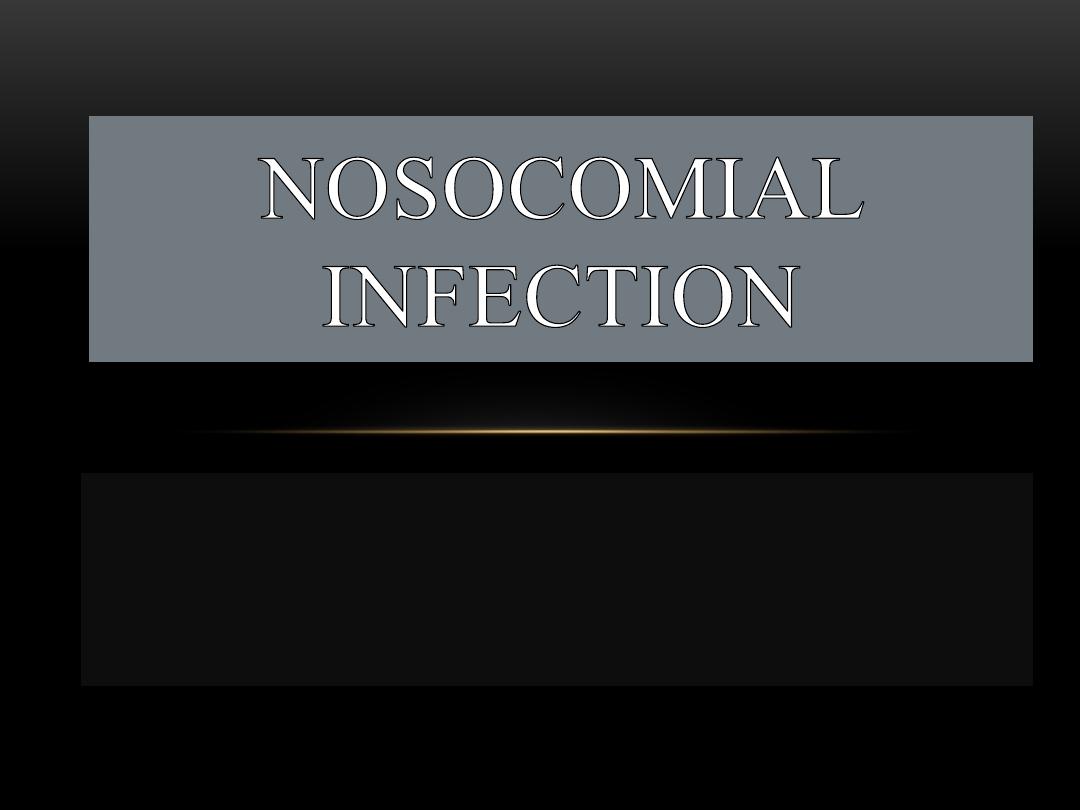
By
Dr. Ameer kadhim Hussein.
M.B.Ch.B. FICMS (Community Medicine).

DEFINITION
A nosocomial infection also called
“hospital
acquired infection HAI”
can be defined as
an
infection acquired in hospital by a
patient who was admitted for a reason other
than that infection.

DEFINITION
It is infection occurring in a patient in a hospital
or other health care facility in whom the
infection was not present or incubating at the
time of admission.
This includes infections acquired in the hospital
but appearing after discharge, and also
occupational infections among staff of the
facility.
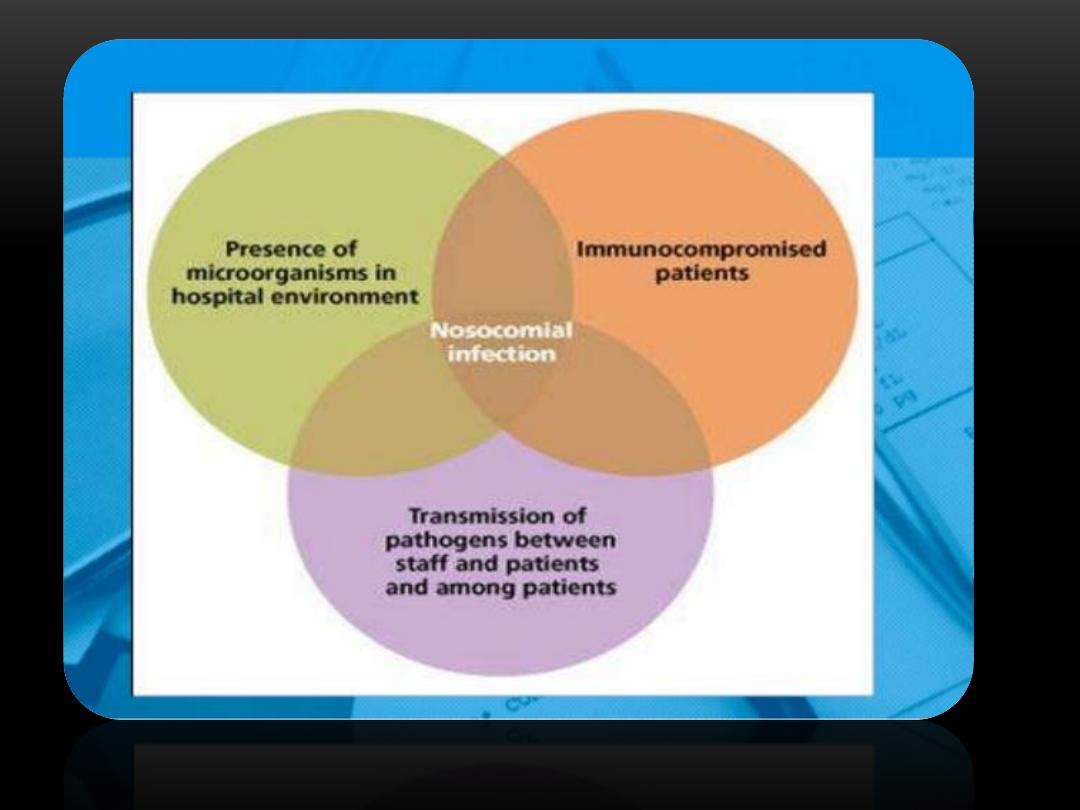
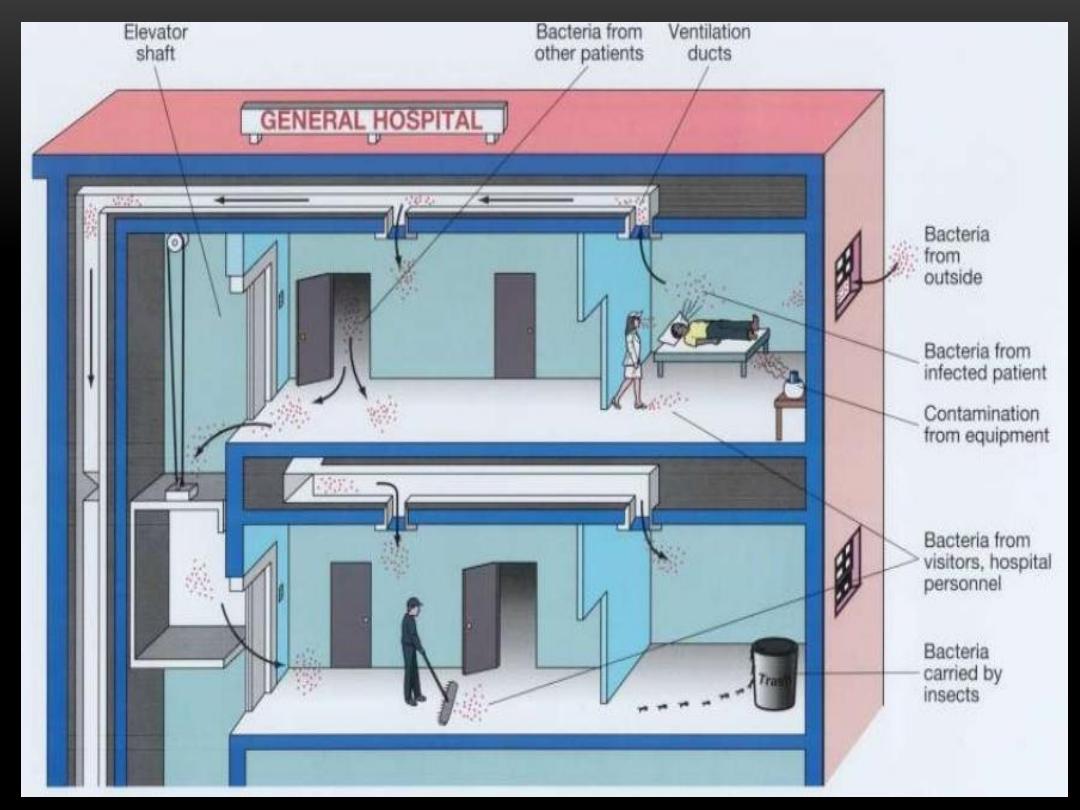

FREQUENCY OF INFECTION
Nosocomial infections occur worldwide and affect both
developed and resource-poor countries. Infections acquired
in health care settings are among the major causes of death
and increased morbidity among hospitalized patients.
They are a significant burden both for the patient and for
public health.
A prevalence survey conducted by WHO in 55 hospitals of
14 countries representing 4 WHO Regions (Europe, Eastern
Mediterranean, South-East Asia and Western Pacific)
showed an average of 8.7% of hospital patients had
nosocomial infections.

FREQUENCY OF INFECTION
•
The most frequent nosocomial infections are
infections of surgical wounds, urinary tract infections
and lower respiratory tract infections.
•
The WHO study has shown that the highest
prevalence of nosocomial infections occurs in
intensive care units and in acute surgical and
orthopaedic wards.
•
Infection rates are higher among patients with
increased susceptibility because of old age,
underlying disease, or chemotherapy
.

HAI BURDEN IN USA
1,7 million affected patients.
Urinary Tract Infection: 36%; 561,667 episodes, 13,088
deaths.
Surgical Site Infection: 20%; 274,098 episodes.
Catheter Related Bloodstream Infections: 11%; 250,000
episodes,28,000 deaths.
Ventilator Associated Pneumonia: 11%.
Attributable mortality: 3.6%, approximately 99,000 deaths.
Annual economic impact: about US$ 4,5 billion.
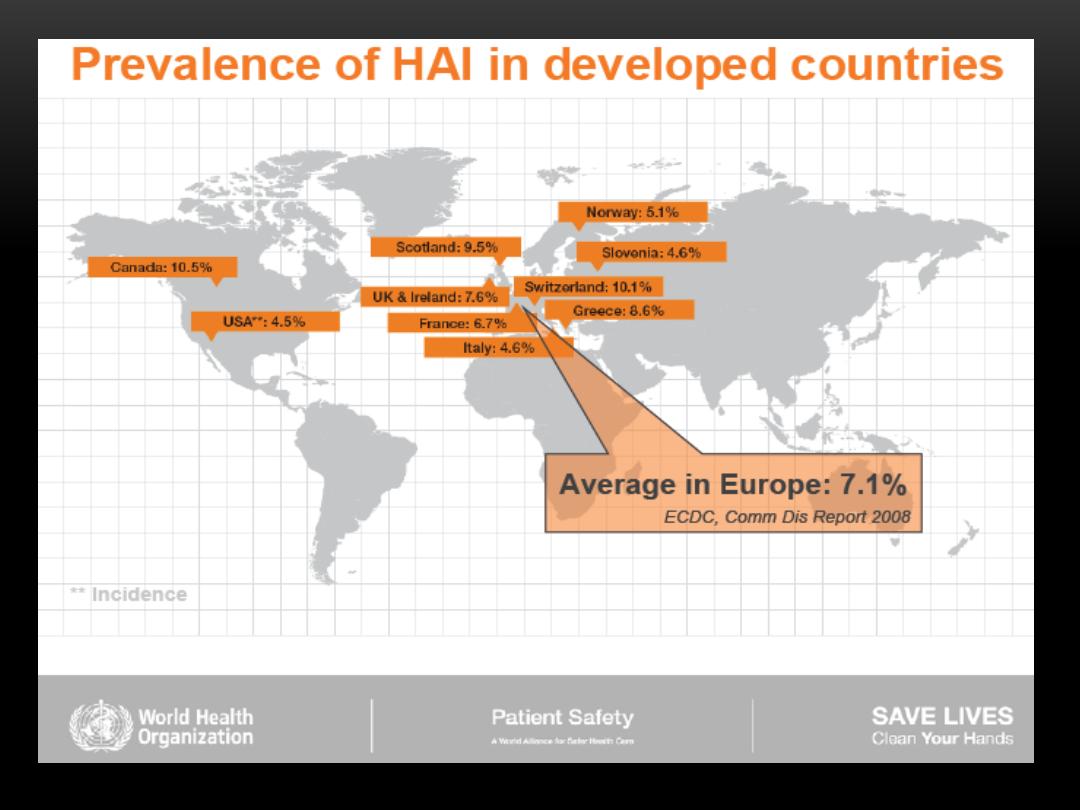

FACTS ABOUT HEALTH-CARE ASSOCIATED
INFECTION IN DEVELOPING COUNTRIES
•
The risk of infection is 2-20 times higher than
in developed countries, and the proportion of
patients infected can exceed 25%.
•
Unsafe blood transfusion causes every year:
•
16 million hepatitis B infections, 5 million
hepatitis C infections, and 160 000 cases of
HIV.

•
Reuse of contaminated syringes caused in 2000:
•
21 million hepatitis B infections , 2 million
hepatitis C infections 260 000 HIV infections.
•
Unsafe waste disposal: in 22 developing
countries, the proportion of facilities using
inappropriate waste disposal methods ranges from
18% to 64%.
FACTS ABOUT HEALTH-CARE ASSOCIATED
INFECTION IN DEVELOPING COUNTRIES

CONDITIONS LEADING TO HIGHER HAI
BURDEN IN DEVELOPING COUNTRIES
Inadequate hygiene conditions.
Poor infrastructure and Inadequate or
insufficient equipment.
Lack of microbiological information.
Understaffing.
Overcrowding.
Lack of knowledge and low staff preparedness.

Inappropriate use of antibiotics.
More diseased population and unfavorable
social background.
Lack of national policies and programs.
Costs falling on individual patients.
CONDITIONS LEADING TO HIGHER HAI
BURDEN IN DEVELOPING COUNTRIES
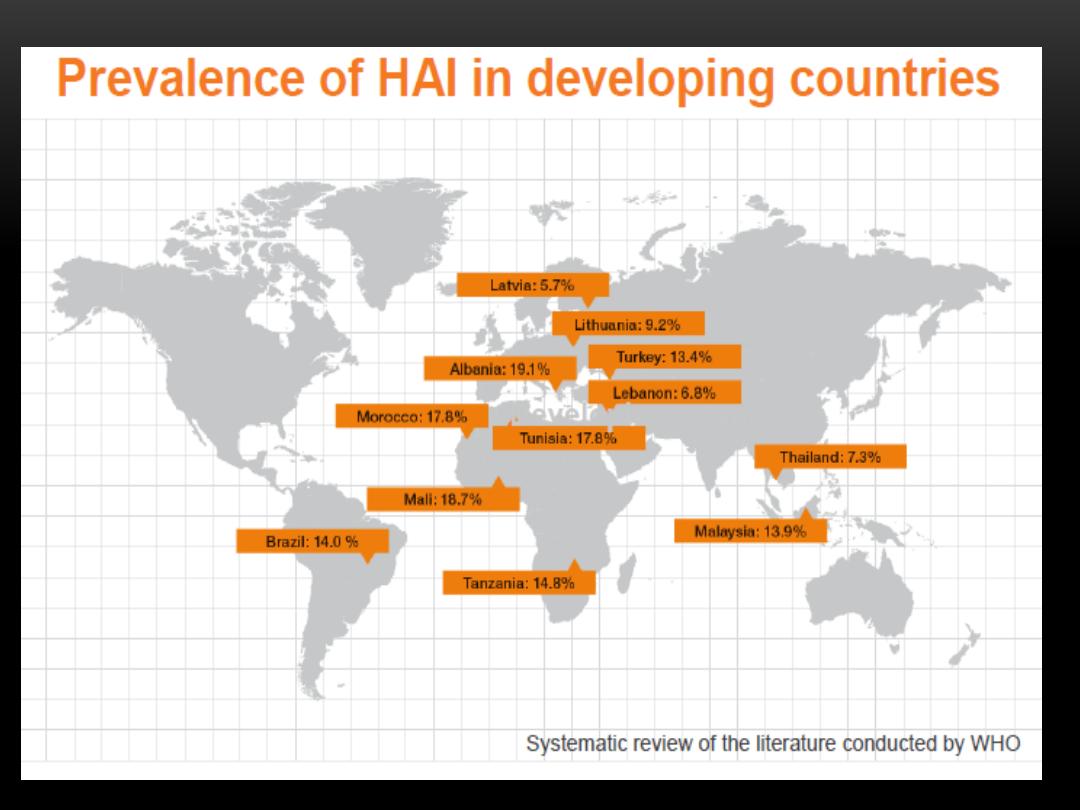

IMPACT OF NOSOCOMIAL INFECTIONS
•
HCAI can cause:
1.
More serious illness.
2.
Prolongation of stay in a health-care facility.
3.
Long-term disability.
4.
Excess deaths.
5.
High additional financial burden.
6.
High personal costs on patients and their
families.

FACTORS INFLUENCING THE DEVELOPMENT OF
NOSOCOMIAL INFECTIONS
A . The microbial agent:
•
Many different bacteria, viruses, fungi and
parasites may cause nosocomial infections.
•
Infections may be caused by a
microorganism acquired from another
person in the hospital (
cross-infection
) or
may be

•
caused by the patient’s own flora (
endogenous
infection
).
•
Some organisms may be acquired from an
inanimate object or substances recently
contaminated from another human source
(
environmental infection
).
FACTORS INFLUENCING THE DEVELOPMENT
OF NOSOCOMIAL INFECTIONS

FACTORS INFLUENCING THE DEVELOPMENT
OF NOSOCOMIAL INFECTIONS
B. Patient susceptibility
1.
Age:
infancy and old age associated with a
decreased resistance to infection.
2.
Underlying disease and immune status:
Patients
with chronic disease such as malignant tumours,
diabetes mellitus, renal failure have an increased
susceptibility to infections.

3.
Diagnostic and therapeutic interventions:
Many modern diagnostic and therapeutic
procedures, such as biopsies, endoscopic
examinations increase the risk of infection.
FACTORS INFLUENCING THE DEVELOPMENT
OF NOSOCOMIAL INFECTIONS

FACTORS INFLUENCING THE DEVELOPMENT
OF NOSOCOMIAL INFECTIONS
C. Environmental conditions:
The following factors related to hospital environment
contribute to the development of nosocomial infections:
1.
Crowded conditions within the hospital.
2.
Frequent transfers of patients from one unit to
another.
3.
Concentration of patients highly susceptible to
infection in one area (e.g. newborn babies, burn
patients).

FACTORS INFLUENCING THE DEVELOPMENT
OF NOSOCOMIAL INFECTIONS
D. Bacterial resistance:
•
Many strains of pneumococci, staphylococci,
enterococci and tuberculosis are currently resistant to
most or all antimicrobials which were once effective.
Multi resistant Klebsiella and Pseudomonas
aeruginosa are prevalent in many hospitals.
•
This problem is particularly critical in developing
countries where more expensive second-line
antibiotics may not be available or affordable.
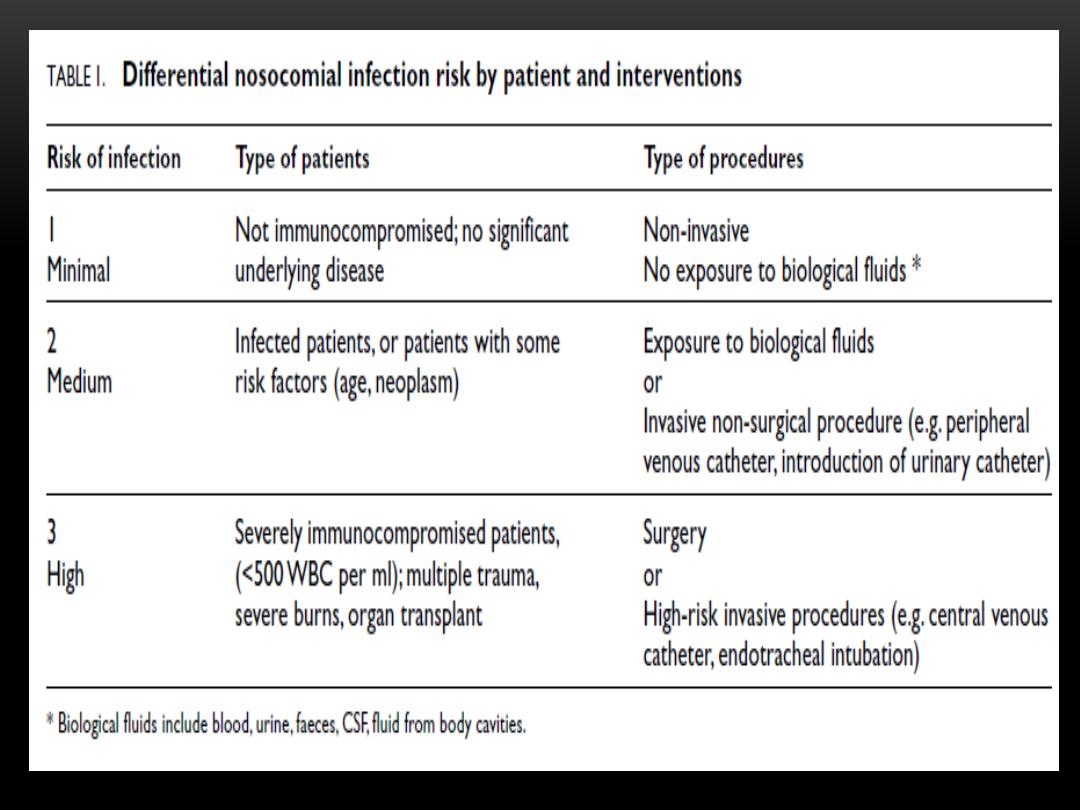

PREVENTION OF NOSOCOMIAL INFECTION
Prevention of nosocomial infections requires an integrated and
monitored programme which includes the following key
components:
1. limiting transmission of organisms between patients in direct
patient care through adequate hand washing and glove use, and
appropriate aseptic practice, isolation strategies, sterilization and
disinfection practices.
2. Controlling environmental risks for infection.
3. Protecting patients with appropriate use of prophylactic
antimicrobials, nutrition and vaccinations.

PREVENTION OF NOSOCOMIAL
INFECTION
4. Limiting the risk of endogenous infections by
minimizing invasive procedures and promoting optimal
antimicrobial use.
5. Surveillance of infections, identifying and controlling
outbreaks.
6. Prevention of infection in staff members.
7. Enhancing staff patient care practices, and continuing
staff education.

PREVENTION OF NOSOCOMIAL
INFECTION
Infection control is the responsibility of all
health care members including:
doctors, nurses, therapists, pharmacists,
engineers and others.

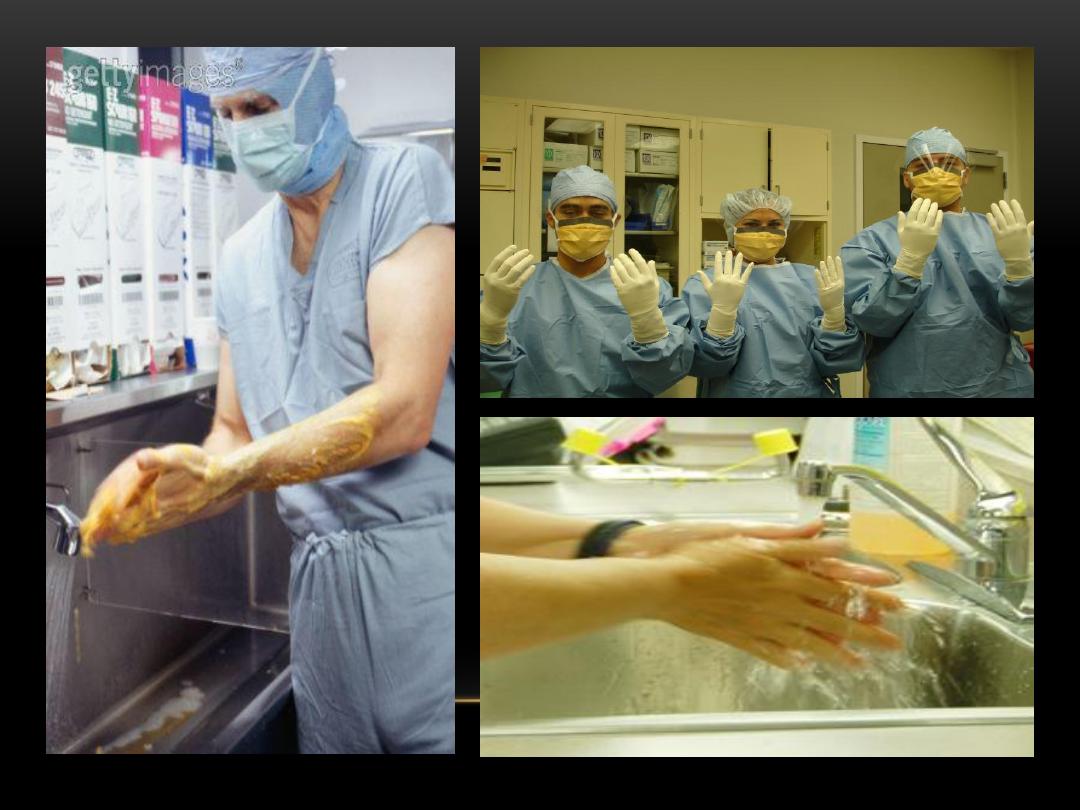
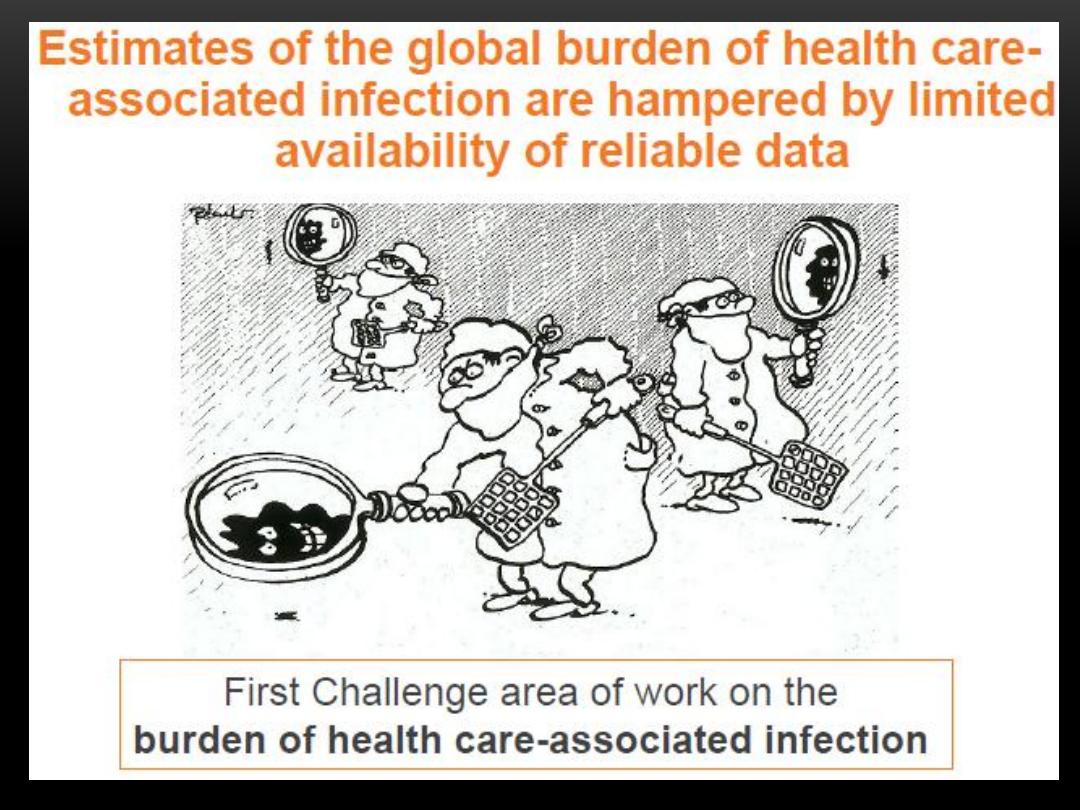

Thank you
